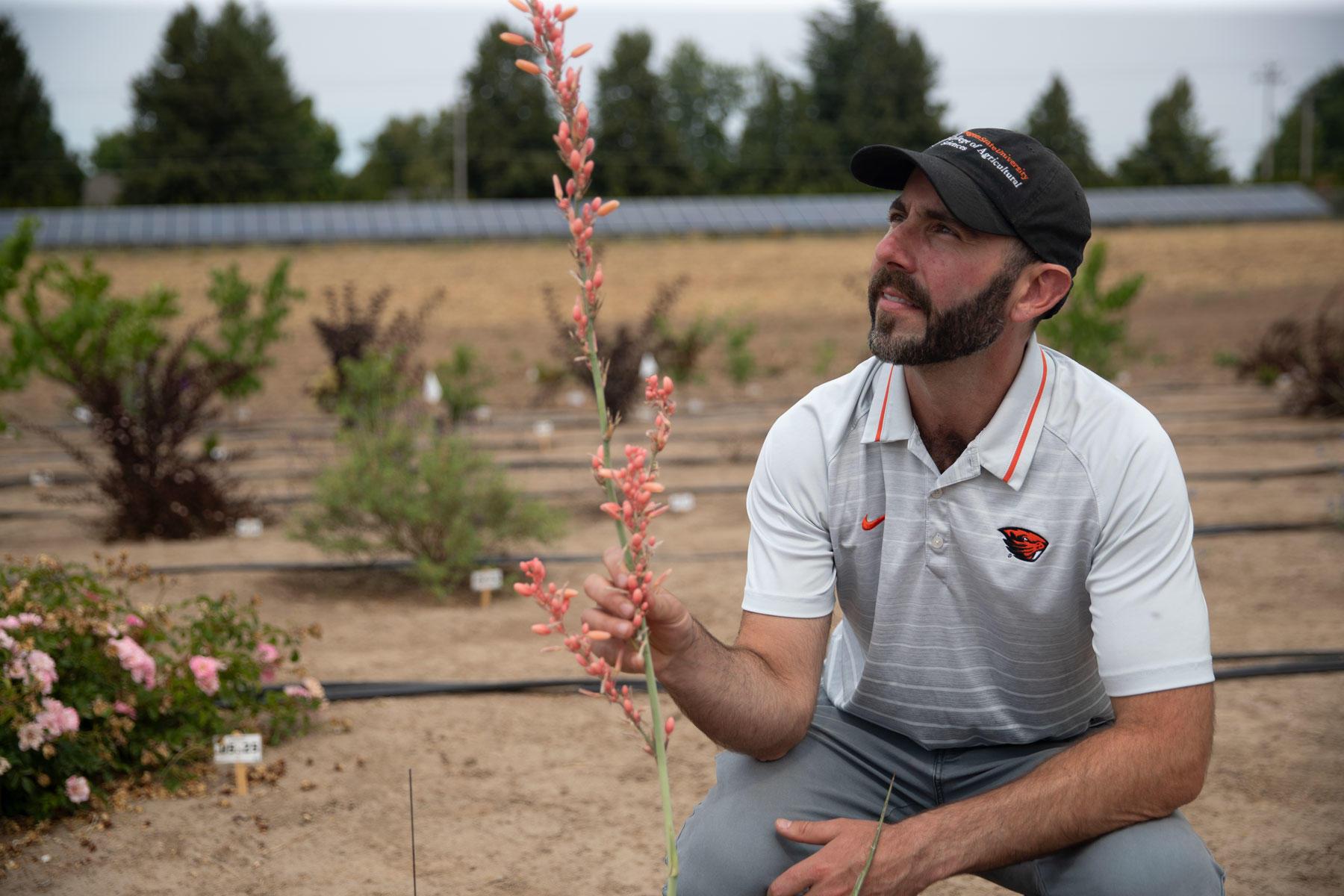AURORA, Ore. — In a sunbaked field in the northern Willamette Valley, 15 species of plants are being tested to see which ones can thrive as the climate changes.
“Those that do best under low-water conditions will be recommended to the green industry. This hard data will guide nurseries in choosing appropriate plants to produce for Western North America’s shifting climate.”
In 2020, Lloyd Nackley, Oregon State University Extension Service nursery production and greenhouse management specialist and associate professor in the College of Agricultural Sciences, joined a multi-state research team of six Western universities to determine the climate readiness of selected ornamental plants.
“We are trying to find solutions for heat mitigation, including growing ornamentals under drought conditions to see which are the most ‘climate-ready’ to meet changing needs,” Nackley said. “Those that do best under low-water conditions will be recommended to the green industry. This hard data will guide nurseries in choosing appropriate plants to produce for Western North America’s shifting climate.”
Finding climate-adapted plants is a priority for the nursery industry, which was Oregon’s highest value agricultural commodity with sales of $1.32 billion in 2021, according to the Oregon Department of Agriculture.
“There’s nothing like this outside of this study group,” Nackley said. “Our field trials are happening around the West, from Arizona to Washington. We’re the only ones using controlled irrigation over such a large latitude gradient.”
How the trials work
Plants are set out in a randomized block design and given one full season of regular irrigation so they can root into native soil. Using the AgriMet weather station at the OSU North Willamette Research and Extension Center, the team adjusts irrigation based on evapotranspiration — how much water leaves the soil and returns to the atmosphere.
“As the soil dries and we hit a certain threshold, irrigation gets turned on,” Nackley said. “Each plant has a dripline going to it that can be adjusted at three levels of water. One is kept really wet, one medium and one we let dry down.”
Plants are grouped into three hydrozones so those with similar water needs receive the same amount.
“One of the biggest strengths of this project is engagement with people,” Nackley said. “We invite people to come and comment. It’s a form of crowdsourcing. We’re getting people who are familiar with plants; people who consider how plants grow and have good input.”
What the evaluations showed
Most of the plants — such as mock orange, rose of Sharon, rosemary and Oregon grape — are already common in Oregon gardens. A few, such as Vitex ‘Blue Diddley’ and western spicebush, are less familiar. Others are new and not yet released.
Nackley was impressed with two roses, Proven Winners ColorChoice ‘Oso Easy Urban Legend’ and Star Roses ‘Petite Knock Out.’
“They are incredibly drought-tolerant,” he said. “But not just that. They deadhead themselves. They are low maintenance. Set it and forget it.”
Other standouts were the ninebarks Physocarpus ‘Little Devil’ and ‘Diablo,’ which bloomed all summer. Eastern redbud (Cercis canadensis) and western redbud (Cercis occidentalis) did well. Rose of Sharon (Hibiscus syriacus cultivars) handled the conditions. Lantana was a goner because of cold winter temperatures, and Hydrangea paniculata ‘Strawberry Shake,’ usually sun tolerant, scorched in the summer drought.
Each plant was scored on a 1–5 Mean Overall Appearance Score, with 5 excellent. Plants that scored 3 or lower were not recommended for those irrigation conditions.
Blue Ribbon Winners, which excelled while receiving only 20% of their potential water needs, included:
- Ceanothus ‘Victoria’
- Hibiscus ‘Purple Pillar’
- ‘Urban Legend’ rose
- ‘Petite Knock Out’ rose
- ‘Arp’ rosemary
- Vitex ‘Blue Diddley’
There were no Happy Mediums in the NWREC trial because many of the drought-tolerant species still struggled in the hot, dry Willamette Valley summers.
Sharing results
“More than anything, our project creates conversation about how to have a beautiful garden without so much water,” Nackley said. “There’s a lot of doom and gloom about whether a lot of plants will do well. We want to tell people about the changing water availability but also about beautiful plants that will do well.”
Data from Oregon and from the other five universities will be sent to UC Davis to expand its long-term database. The project, funded by the U.S. Department of Agriculture, will continue into 2025.
Previously titled OSU Extension research group searches for plants to weather climate change

